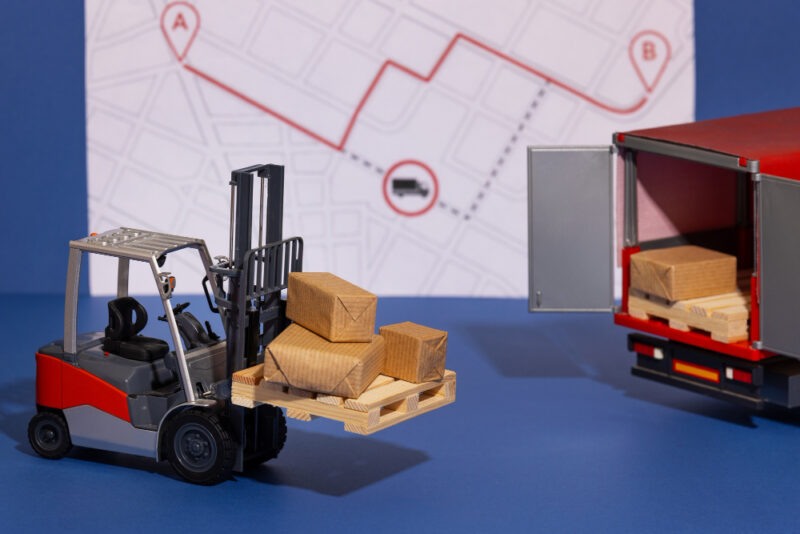The produce supply chain represents a critical cog in our global food system. However, it’s increasingly clear that this system must prioritize sustainability to meet growing demand while mitigating environmental impact.
This article will explore various sustainable practices that can be adopted within the produce supply chain. These methods aim to reduce waste, minimize the carbon footprint, and promote a more equitable and resilient model of food production and distribution.
For more ways to maintain an efficient and sustainable produce business, check out Silo. See how their fintech platform is helping businesses adopt and fund sustainability by clicking here.
Efficient irrigation practices
Efficient irrigation is paramount when it comes to optimal resource use on the farm, especially in drier climates where water is scarce.
One popular method is drip irrigation — which delivers water directly to a plant’s roots — minimizing evaporation and runoff. Another is the use of irrigation scheduling, where farmers water their crops based on soil moisture levels and weather forecasts rather than on a set schedule.
Precision farming techniques
Precision farming, or precision agriculture, involves using technology (like GPS and remote sensing) to monitor and optimize crop needs. This reduces the amount of water, fertilizer, and pesticides used, leading to both financial savings and a smaller environmental footprint.
Crop rotation and cover crops
Crop rotation involves alternating the type of crop grown in a specific field from season to season, which can help to restore soil fertility and reduce the need for chemical fertilizers. Additionally, growing cover crops (like clover or mustard) in the off-season can further improve soil health, prevent erosion, and manage pest populations.
Waste management
Proper waste management can also contribute to optimal resource use. Composting organic waste can turn it into valuable fertilizer, while anaerobic digesters can convert waste into biogas, providing an on-farm source of renewable energy.
Energy efficiency
Farm operations can be made more sustainable through the use of energy-efficient machinery and renewable energy sources. Solar panels, wind turbines, and energy-efficient tractors and equipment can significantly reduce a farm’s energy consumption and its carbon footprint.
Sustainable packaging solutions
Sustainable packaging presents another opportunity for the produce supply chain to decrease its environmental impact. It involves using materials and manufacturing processes that are efficient, safe, and beneficial throughout the product’s lifecycle.
Here are some of the sustainable packaging solutions:
- Biodegradable packaging: This type of packaging is designed to break down naturally over time, reducing landfill waste. Examples include packaging made from mushrooms, seaweed, or compostable plastic substitutes.
- Reusable packaging: Reusable or returnable containers offer a closed-loop system where packaging is returned, cleaned, and reused. This not only minimizes waste but can also lead to cost savings in the long term.
- Recycled material: Packaging made from recycled material reduces the need for new raw materials. This could include paper, cardboard, or post-consumer recycled plastic.
- Lightweighting: Reducing the weight of packaging material can decrease both the carbon footprint of its production and the fuel needed for its transportation.
Efficient transport and distribution methods
Efficient transport and distribution methods play a key role in sustainable practices within the produce supply chain. A few strategies to reduce the carbon footprint associated with these stages include:
- Optimized routing: Using GPS and advanced logistics software, routes can be planned to minimize distance, reduce fuel consumption, and decrease emissions.
- Consolidated shipments: By consolidating shipments, the same amount of goods can be transported using fewer trips. This not only saves fuel but also reduces the number of vehicles on the road.
- Cold chain management: Efficient refrigeration techniques and equipment can maintain product quality during transport, reducing the risk of spoilage and waste.
- Local sourcing: Whenever possible, sourcing produce locally reduces the need for long-distance transport, thereby reducing associated emissions. This also supports local economies and can result in fresher produce for consumers.
Technology’s role in sustainable agriculture
Technology increasingly plays a pivotal role in promoting more sustainable agriculture. Here are several ways in which it contributes:
- Data analytics and machine learning: Advanced data analytics can help optimize resource use, predict crop yields, and manage risks associated with pests, diseases, or changing weather conditions. Machine learning algorithms can analyze an array of agricultural data to make informed decisions, leading to increased efficiency and reduced waste.
- Inventory management software: Modern inventory management systems aid in tracking and optimizing stock levels, reducing waste and inefficiencies. These software solutions can provide real-time data, automate purchasing decisions based on demand patterns, and improve product rotation strategies, all of which contribute towards a more sustainable supply chain.
- Internet of Things (IoT): IoT devices, such as soil sensors and drones, can provide real-time data on crop health, soil conditions, and weather patterns. This enables precision farming techniques, conserving resources like water and fertilizer and reducing the environmental impact.
- Vertical farming: Vertical farms use controlled environments and LED lights to grow crops year-round, regardless of external weather conditions. This can drastically reduce water usage and eliminate the need for pesticides, contributing to a more sustainable food system.
- Robotics: Robots can automate repetitive tasks like weeding or harvesting, increasing efficiency and reducing resource use. Some robots even use machine vision to identify and precisely eliminate weeds, reducing the need for chemical herbicides.
Sustainability in the produce supply chain can be found in many places
The intersection of sustainability and technology within the agriculture sector is reshaping our approach to food production and distribution.
From advanced packaging solutions and transport methods to cutting-edge technological applications and sustainable farming practices, each strategy plays a key role in lowering carbon footprints, conserving resources, and creating a more eco-friendly food system.










